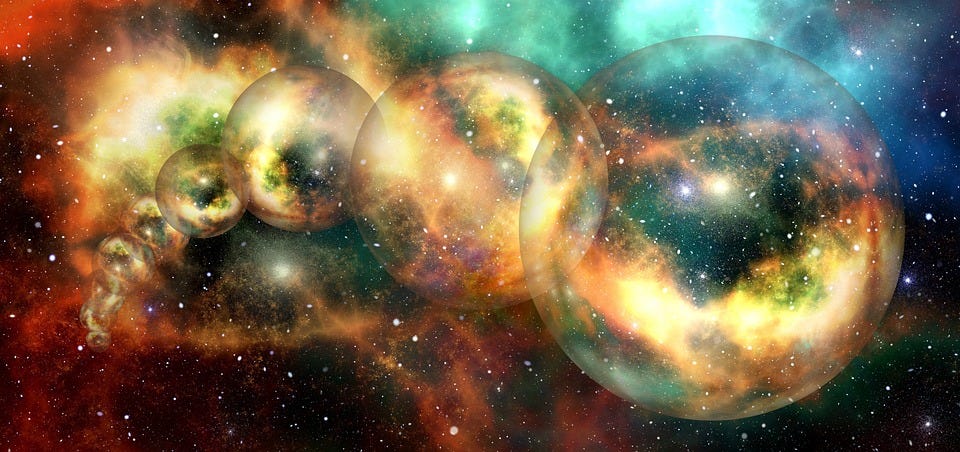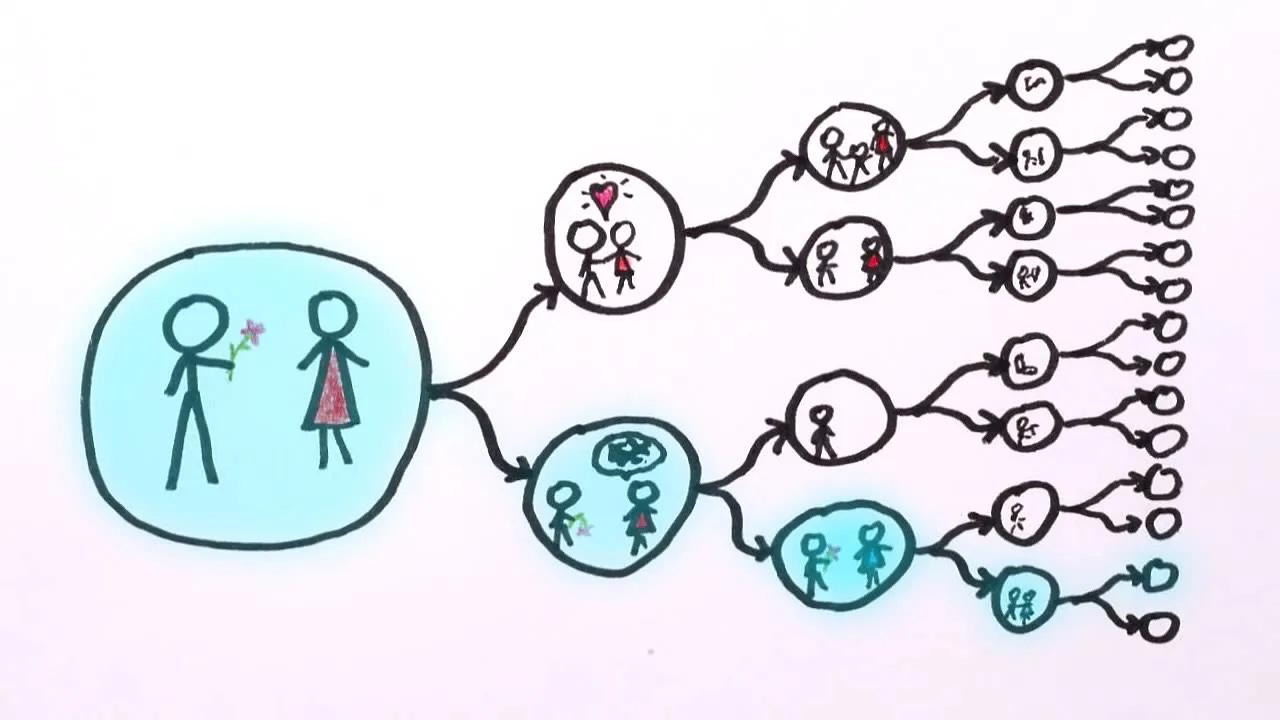It's terrifying when you consider that every thought we have, every choice we could possibly make, branches off into a new world.
— Blake Crouch, Dark Matter
Greetings, Fellow Bohron

In addition to higher dimensions and the multiverse, there is yet another type of parallel universe, the quantum universe predicted by quantum mechanics. But before we foray into its deep implications, we first talk about the basic postulate of quantum mechanics which gives rise to such a strange idea. So let’s begin.
Schrodinger's Cat
Schrödinger's cat is a thought experiment that illustrates the paradox of quantum superposition. A simplified version of Schrodinger's cat experiment is as follows:
A cat is placed in a sealed box with a bomb that has a 50% chance of going off. So the cat has a 50% chance of being alive or dead. The bomb can either go off or not. The cat is either dead or alive. This is just common sense.

In quantum theory, we consider both possibilities: the sum of the wave functions of a dead cat and an alive cat. This is to say, we describe the cat in two states. So In quantum mechanics, the cat is neither dead nor alive but a superposition of alive and dead states. What does this mean in reality?
There are several ways to resolve this paradox. According to Copenhagen Interpretation, once you open the box, you make a measurement and determine if the cat is dead or alive. The superimposed wave function collapses into a single state. The waves of probability disappear, leaving only well-defined particles. Once you open the box, the cat is either dead or alive and is no longer described by a wave function.

Many Worlds Interpretation
In 1957, Hugh Everett proposed another way to resolve the paradox by introducing the "many worlds" idea. It states that when we open the box and make an observation the universe splits in half, with a live cat in one universe and a dead cat in the other.
According to this idea, the wave function never collapses but splits off into countless universes. This splitting happens every time a quantum event occurs. Any universe that can exist will exist. The stranger the universe, the higher its odds of existence. So if your crush rejected you here in your universe, don’t worry there ought to be a parallel world in which she likes you back.

This is how quantum mechanics explains the theory of the multiverse.
Quantum Universes
Why is the concept of quantum universes so important?
At the time of the big bang, the size of the universe was much smaller than an electron. We know that electrons are quantized and can exist in parallel states at once. So a universe at its birth must also exist in parallel states, hence the term quantum universe.

But there is a catch. For the wave function of a system to collapse, the Copenhagen interpretation requires observation to be made by an observer who is outside the system. How can the observation of the entire universe be made when the observer is inside the universe?
If a wave function describes the universe, then how can an "outside" observer collapse it? The inability to observe the universe from the outside is considered a major flaw of the Copenhagen interpretation.
From where did our universe spring into existence?
How does quantum cosmology explain the birth of the universe?
According to this theory, our universe started out as a tiny bubble in space-time foam due to a quantum fluctuation in the vacuum. Even empty space is full of activity, in which universes pop in and out of existence, but on an extremely small scale. Most of these universes recollapse immediately after they are born. For an unknown reason, one of the bubbles did not recollapse but kept on expanding. This is our universe.

Several observations support this theory:
Since our universe came out of nothing, it must have zero charge. Experimental observations confirm this; there is an equal amount of positive and negative charge in the universe i.e. net charge of the universe is zero.
Our universe must have zero spin since it came out of nothing. Many astronomers believe this to be true.
The total matter-energy content of the universe is very small. The positive energy of matter and the negative energy associated with gravity almost cancel each other out. This can also be explained by the birth of the universe from nothing.
Can these parallel universes communicate with each other? Can a baby universe be created in a laboratory? We’ll explore these questions next time.
Sources:
Ch 13 - Parallel Universes, Physics of the Impossible, Michio Kaku
The Copenhagen Interpretation is Wrong; Here’s Why - Fermion Physics, Medium
Schrödinger's cat - Wikipedia
You May Also Read:




